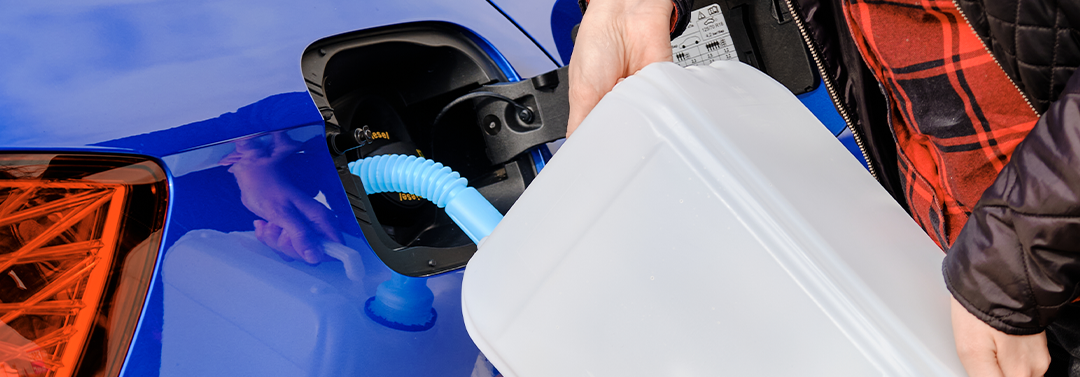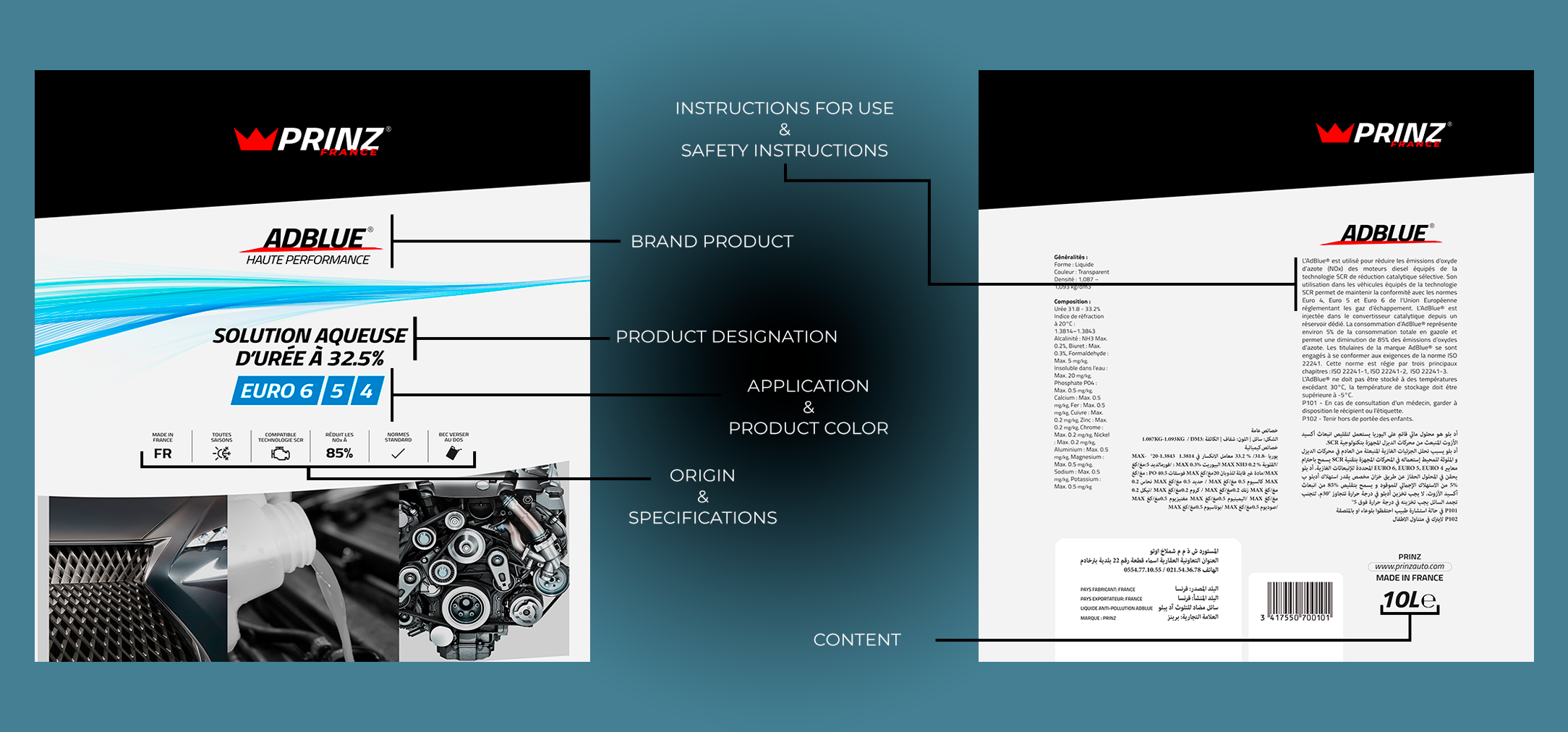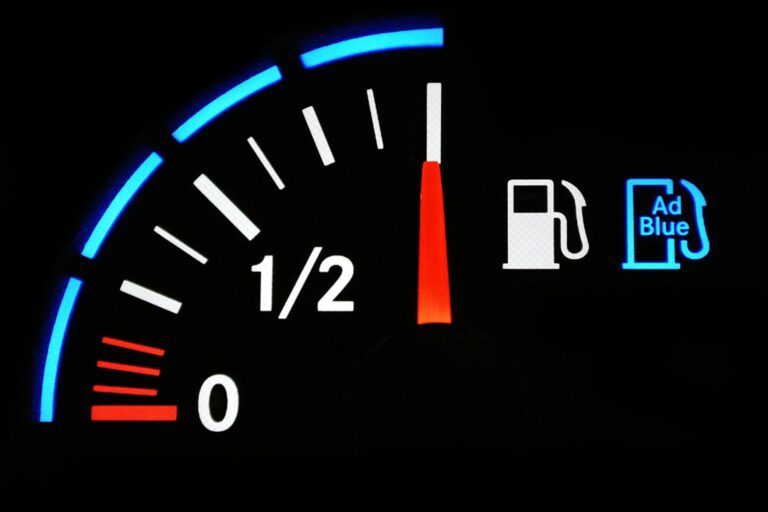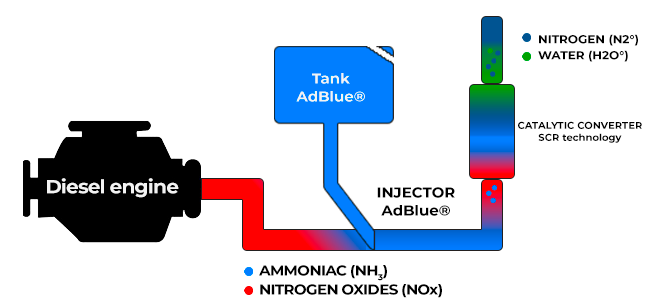PRINZ Automotive tells you all the secrets of AdBlue®, which is essential for the proper functioning of the diesel engine.
1/ What is AdBlue®?
It is a 32.5% aqueous urea solution used to reduce nitrogen oxide (NOx) emissions from diesel engines equipped with selective catalytic reduction (SCR) technology.
2/ What is it for?
It causes the decomposition of exhaust particles produced by the catalytic converters of diesel engines, which are harmful to the environment. Its use in vehicles equipped with SCR technology helps maintain compliance with the European Union’s Euro 4, 5 and 6 exhaust gas standards.
3/ How much AdBlue® should be used in general?
On average, 1.5 liters of AdBlue® should last about 1000 km, but depending on the driving style of the vehicle, consumption may be higher.
How to read an AdBlue® label?
4/ How is AdBlue® applied?
It is injected into the catalytic converter from a dedicated tank inside the vehicle. The pouring spout is included for the 5L and 10L containers.
5/ Where is the potential reservoir?
- Next to the fuel door
- In the trunk
- Or under the hood
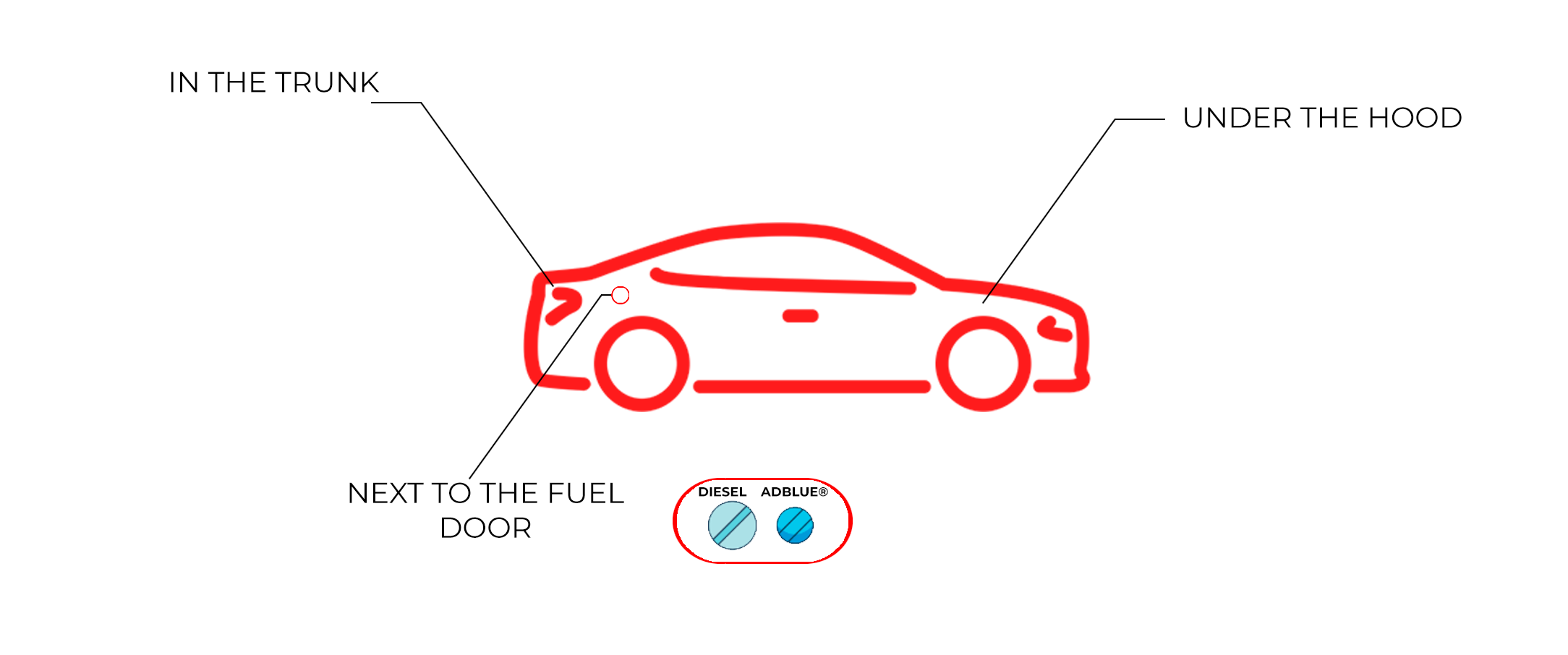
6/ How do I fill up with AdBlue®?
2 possibilities are available to you:
– With an AdBlue® canister
Suitable for all tank locations.
– With an AdBlue® pump
Ideal only when the tank and the fuel door are side by side.
7/ What happens if I don’t use AdBlue®?
As soon as the indicator light appears, it tells you that you need to top up, you will have 2,400 km to go. Once this distance is covered, the car will not be able to restart. You will have to contact a professional.
8/ How to use AdBlue®?
| What to do | What not to do |
|
|
Note that AdBlue® freezes at -11°C and decomposes above 30°C.
9/ What is SCR technology?
SCR technology
Selective Catalytic Reduction
Today, most truck manufacturers have decided to use SCR technology to meet the new regulations on particulate emissions.
Selective Catalytic Reduction, also known as SCR, provides an effective means of “cleaning” diesel engines.
The first SCR systems were manufactured for industrial use in boilers, and as technology advanced, SCR devices were extended to diesel engines in the automotive industry.
The main components of the SCR system
- the catalyst
- AdBlue® injection unit
- AdBlue® tank (independent of the fuel tank)
- AdBlue® dosage control unit
Note that the presence of an AdBlue® tank is mandatory since 01/09/2014 on new diesel vehicles.
Do you have more questions about AdBlue®?
Tell us in the comments

